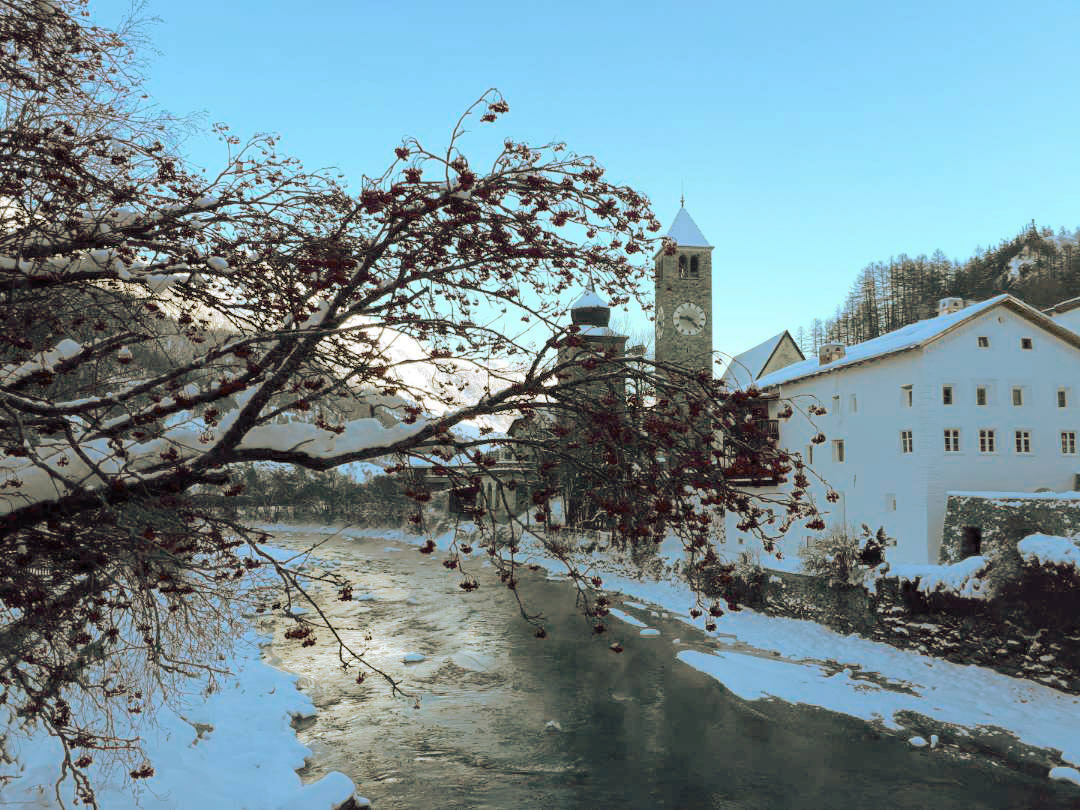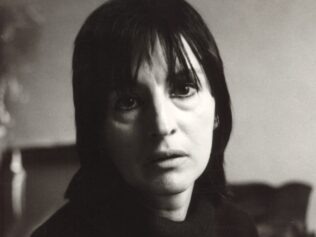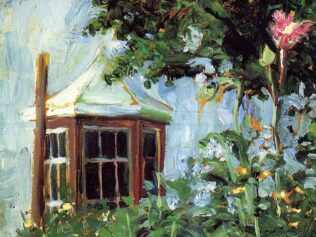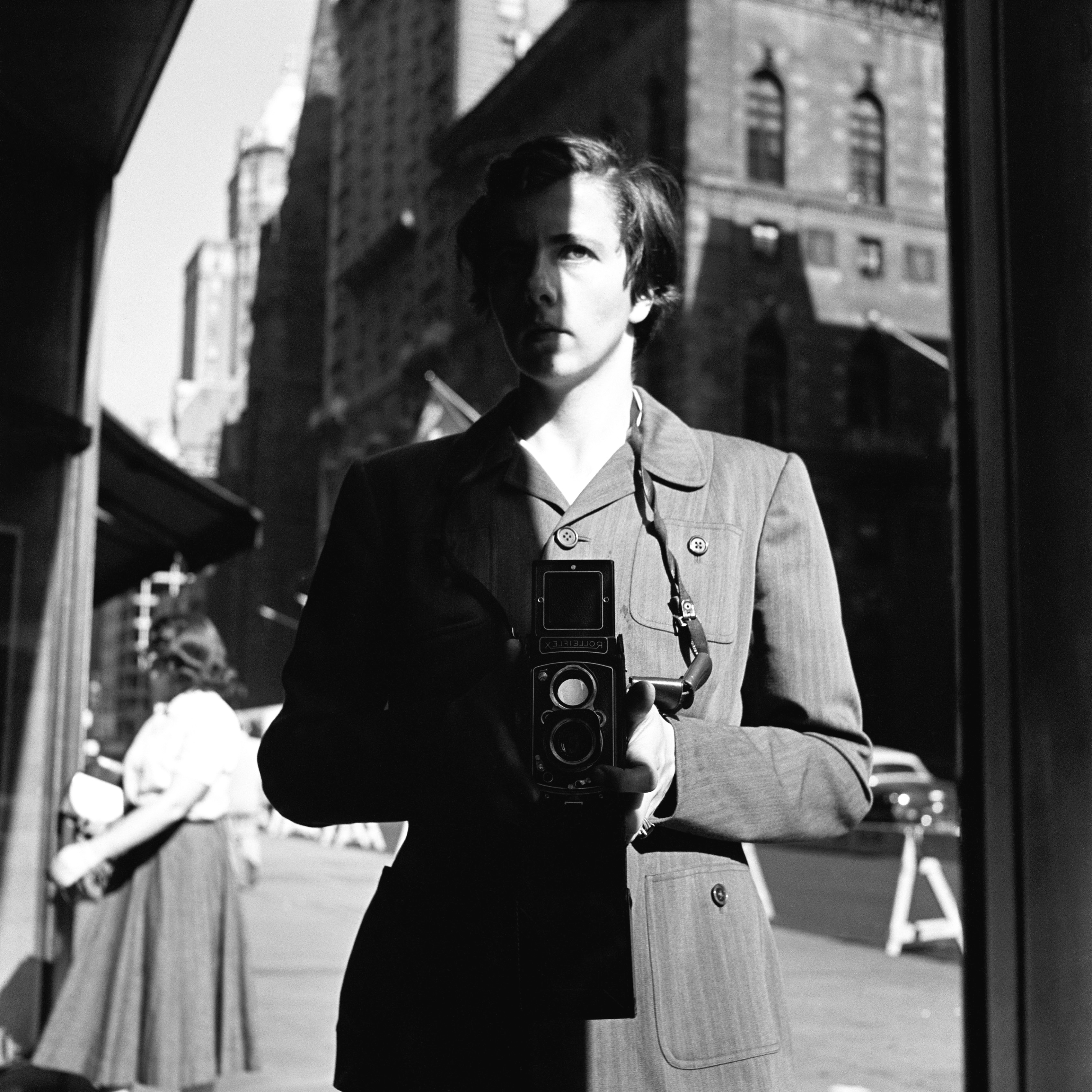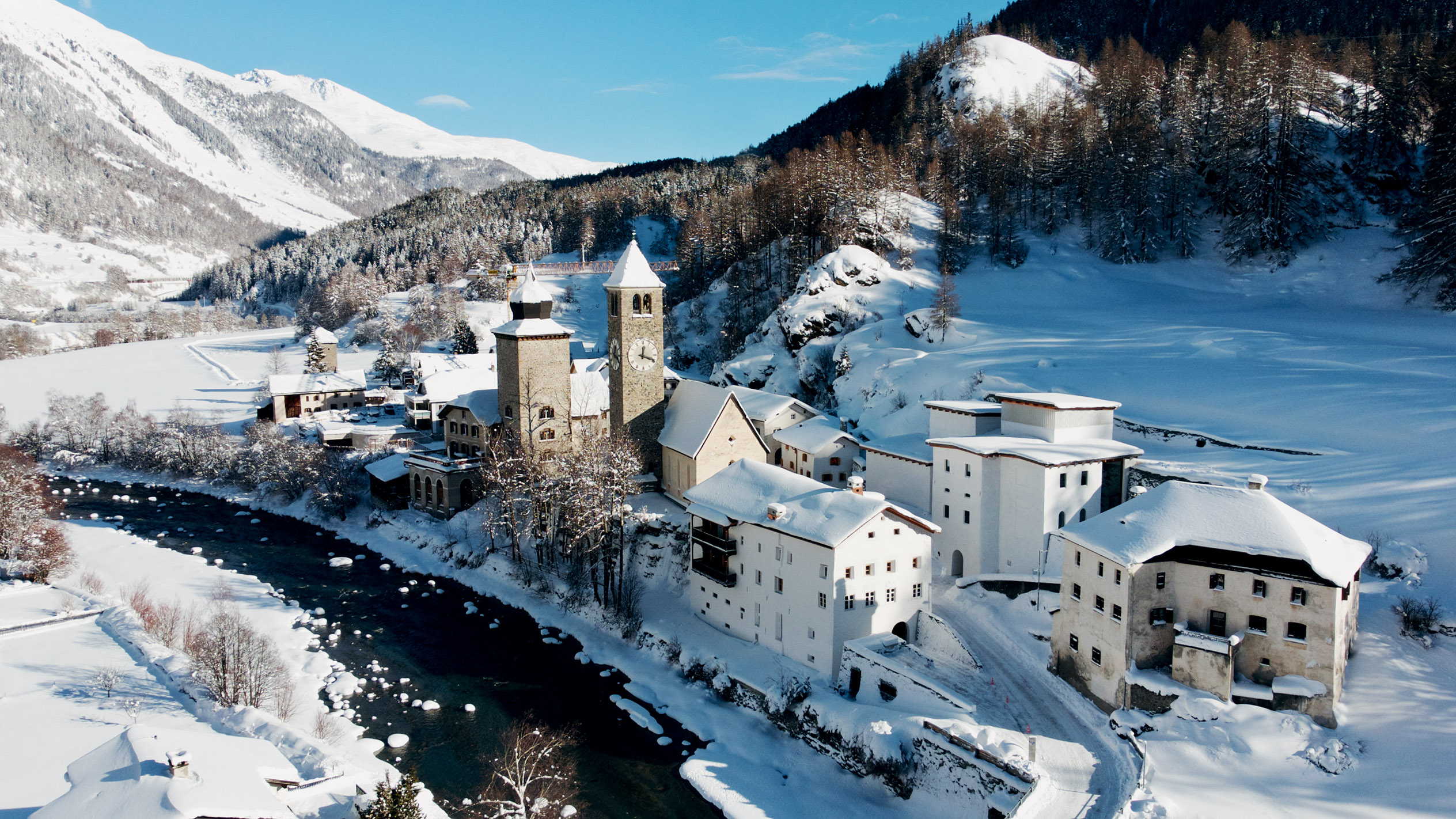
1438m above sea level, Grażyna Kulczyk has fulfilled her dream of an art museum in an alpine village. The village is tiny, the ambitions are great, and the museum is extraordinary. “Przekrój” paid it a visit on the eve of the opening.
Switzerland is not quite my cup of tea. My feet have barely touched its well-developed, clean and expensive ground, and I already feel a bit like an illegal immigrant. It seems that this feeling is not only growing in my heart, but also shows on my face – as soon as I arrive in Zürich, I am selected for a random search from the crowd of passengers. The customs officer hurriedly rummages through my backpack and simultaneously interrogates me, chatting away as if we are mates. He takes a look at my warm clothes, and asks whether it is already cold and wintery in Poland. I respond that the real winter awaits me at my destination: Susch.
“Susch?” he lifts his eyebrow. “That village in Engadine, where that Polish lady is opening a museum of modern art?”
And so, I wonder, can we still say that the idea of ‘this Polish lady’, Grażyna Kulczyk, to build a museum in a tiny alpine village is a utopian operation, when even customs officers at the airport are already talking about it? I just don’t know whether it says more about the Polish collector’s endeavour, or about Switzerland and its customs officers.
* * *
The road from Zürich to Susch charts the distance between zero degrees sludge and double-digit frost glistening in the full sun. To say that Grażyna Kulczyk is opening a museum at the end of the world is an exaggeration – and yet it isn’t. Susch really does lie at the end of the world, or at least the end of the Swiss world, at the easternmost edge of the country, just a stone’s throw away from Italy and Liechtenstein, in the valley of Engadine in the canton of Grisons. Grisons? Engadine? These are names that seem to belong in some new fantasy saga. And indeed, the closer one gets to Susch, the more the landscape resembles the heroic plein-airs straight out of Lord of the Rings. Until Kulczyk officially opens her museum on 2nd January 2019, the national nature reserve remains the biggest tourist attraction in the immediate vicinity of Susch. I did not have the opportunity to visit it. Perhaps that’s for the best – what’s the point of a national reserve in a region that resembles one giant national nature reserve? Interacting with this picturesque landscape could have caused irreversible changes to my sensibilities. Following such an aesthetic experience, how would I be able to go back to living in my native Mazovia?
It takes three hours to get to Susch from Zürich. Along the way, one has to change trains several times; their punctuality suggests that the local railwaymen must indeed wear first-rate watches. The train climbs higher and higher, via progressively bold viaducts and over deep valleys. It goes through several tunnels, including the impressive Vereina, which is almost 20 kilometres long. If this passage is ever obstructed, the Lower Engadine, where Susch is located, is truly cut off from the world (of course, only for a short while). In these parts, winter does not paralyse road users; at best, it impedes their capacity to clear snow off the roads. Sonia Jakimczyk, who works for Kulczyk’s team at the museum, told me that last year the first snow fell in Susch at the end of August. It melted quickly, but by October you could already go snowboarding in one of the neighbouring resorts. And indeed, the closer I get to my destination, the more people with skis I can spot – mostly robust alpine pensioners.
Susch is a request stop – if you don’t press the button, the train won’t stop here. The village begins only to end right away. Officially, just 200 people live here. The impression that this is indeed the end of the world returns, but it is misleading. The resort of Saint Moritz is half an hour’s drive away; the famous Davos is even closer. The ‘magic mountains’ that once excited Mann, Rilke and other writers are now beloved by the rich and famous. Here, at the supposed edge of the world, high society has made itself comfortable in not only the elegant spas, but also the discreet, isolated valleys and picturesque villages.
The village is situated 1438m above sea level. The dry, sunny afternoon welcomes me with a temperature of –10°C, which is expected to drop below –20°C at night. Meanwhile, the museum’s office is hot. The team, consisting of Poles working side by side with the locals, is nearing the end of its three-year design and construction process, and is now preparing for the opening of the inaugural exhibition. When I last saw Kulczyk, the collector was still involved in running the Old Brewery and the Art Stations Foundation in Poznań, at the time the largest private art institution in Poland. It seemed that Kulczyk could have initiated a fashion for creating artistic institutions among prominent local collectors and persons populating the ‘100 Richest Poles’ list. For now, however, this doesn’t seem to be happening: Polish billionaires, if they do collect art at all, do so discreetly. Kulczyk herself, having initially tried to continue with her activities in Poland, eventually resigned. Her efforts to establish a public-private museum of modern art, first in Poznań and then in Warsaw, failed. The story of this disappointment was well-publicized in Poland, and seeing her museum in Susch I now realize that its failure is indeed cause for regret. While it is obvious that one of the richest Polish women has the funds – and you can clearly see the money spent on her venture in Grisons – the energy that she has invested in this place is even more striking.
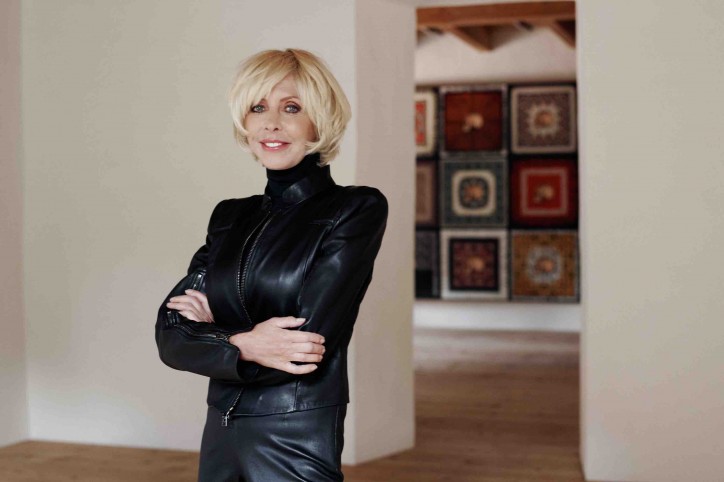
Building a museum in an alpine village is somewhat similar to the process of setting up an opera house in the jungle, but at the same time it is entirely different. To do such a thing, one has to have something of an obsessive vision in the vein of Fitzcarraldo. However, the last thing Kulczyk wanted to see was a foreign body implanted in the local tissue, like a musical theatre appearing, out of the blue, in the middle of a tropical forest. Muzeum Susch is supposed to be something entirely different. The easiest thing to do would be to build it from scratch, according to some sort of top architectural design. However, when you first come to Susch, nothing implies that a billionaire from Central Europe has been pumping a lot of money into the place for three years. The panorama of the village remains unaltered. Susch is an old place – in the Middle Ages, a pilgrimage route to Santiago de Compostela led through the Flüela Pass seen from the village. In 1157, a monastery was founded here. The monks provided shelter for the pilgrims and ran a brewery.
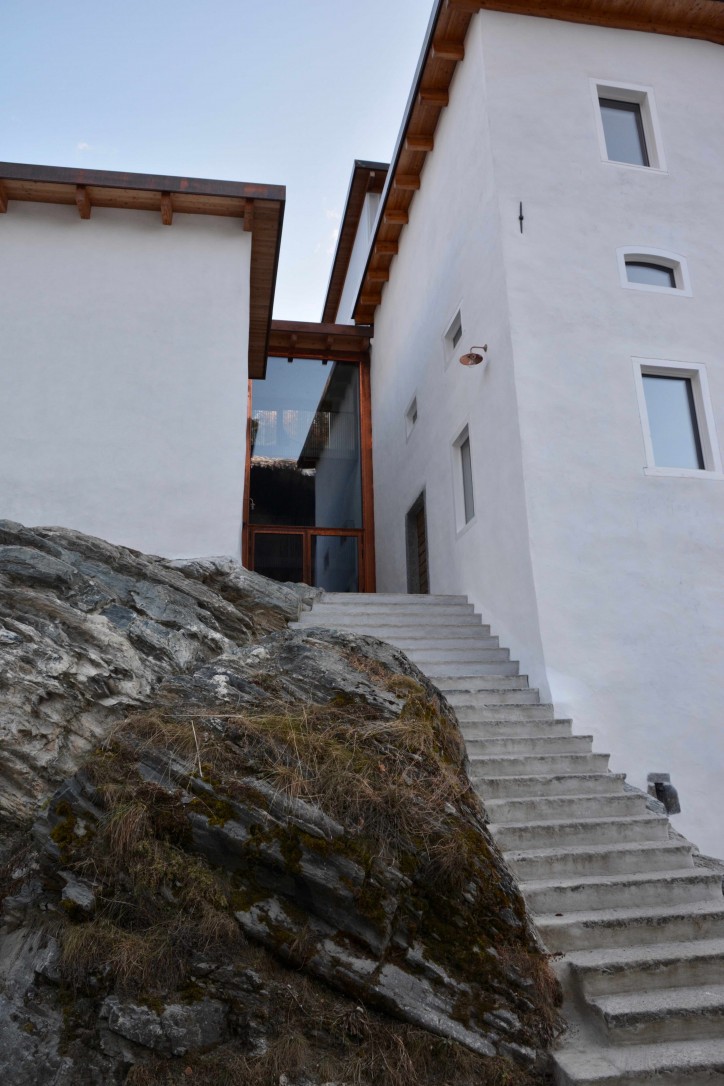
The monastery buildings, more than 800 years old, now lie at the centre of Kulczyk’s museum. The monks have been gone for centuries, but the inhabitants of Engadine still successfully inhabit the stone houses built in the Middle Ages – the products of reliable Swiss craftsmanship. Whatever was erected here several hundred years ago is still standing, such as the church located right next to the museum. During the Reformation period, the citizens of the region gathered there for nine days to debate whether they preferred to be Catholics or Protestants; eventually they chose the latter. The former parish vicarage now belongs to Kulczyk, and in the spring, a centre of artistic residences will open there.
For the time being, however, I am exploring the museum.
In order to observe contemporary interventions in the historical structure of the building, you have to come quite close along the path leading from Susch’s main road. Once inside, the ‘wow effect’ takes hold. However, it is a quite specific ‘wow effect’: subdued and suppressed. The wealthy Switzerland, attracting even flusher people from all over the world, is not a place for the nouveau riche to show off their glamour and money. There will always be someone richer in the vicinity. So, if you want to make an impression here in Switzerland, it’s not by having a fortune, but by being sophisticated enough to know how to spend it wisely.
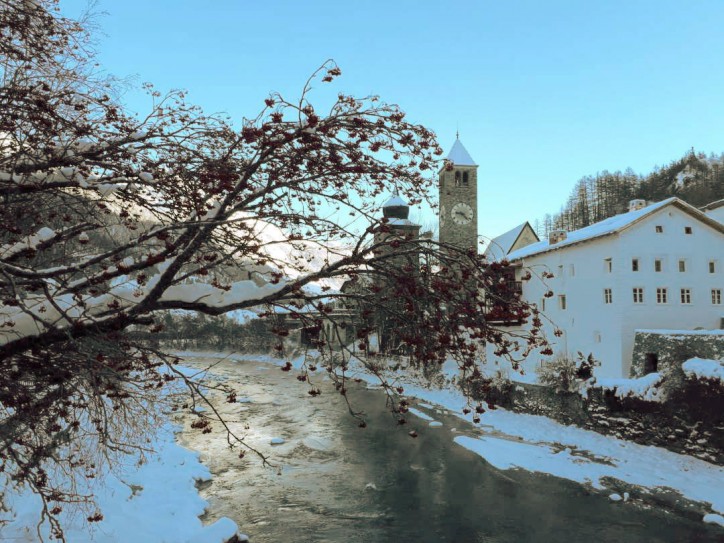
This was Kulczyk’s aim exactly. Her basic idea for Muzeum Susch can be summed up as wanting to have her cake and eat it; to create a modern, multifunctional exhibition space and simultaneously preserve the centuries-old historical framework in which this institution is inscribed. Instead of hiring a star with an impressive name, Kulczyk collaborated with Chasper Schmidlin and Lukas Voellmy, two young architects from Zürich (both in their thirties – quite young in this sector). The collector could expect that they would put their hearts and souls into a project that will allow them to reach the next stage of their careers. It’s not every day that a young, or for that matter, any architect gets the opportunity to work for an investor whose priority is not money, but quality and concept.
Moving through the museum’s interior, however, it is clear that the real author of this place is Kulczyk, who refers to it, without hesitation, as her next child (apart from her biological children, the collector also counts the reconstruction of the Old Brewery in Poznań as her offspring). As I listen to her describing medieval beams and stone exposed during the renovation, and look at further parts that she wants to show me, I realize that if one can indeed fall in love with a building, I am in the company of someone who has. And I must admit that this love is not blind – the building certainly is something to venerate.
A tremendous effort has gone into extracting and exposing the traditional architecture and aura accumulated in the historical stone floors, walls and timber construction of the structure. The advanced technology that allows the building to function as a museum – systems for the maintenance of stable temperature and humidity – has been discreetly concealed, and if it comes to the surface, it is only to cooperate with the past. One of the most interesting things about the architecture here is its unpredictability. Standing in one part of the building, it is impossible to guess what awaits in the next. One minute, we are on an inner street where horse-drawn carts had once arrived to collect the beer brewed here; the next, a mere few rooms away, we enter a spacious white cube. One of the exhibition spaces in the museum is a grotto that used to serve as the brewery’s cold storage; another is the former stables. Beside the old and new architecture, geology shines through. We find ourselves in areas where the solid rock on which the monastery was built is exposed. We stand inside the mountain. Water from underground streams trickles down a bare rock; limestone sediments are forming. It is difficult to find a better metaphor for a sentient space shaped as an alternative to the sterile, cube-like interior into which art is packed in contemporary galleries.
At some point, I realize that this labyrinth of 25 different rooms, small and large, intimate and spacious, goes far beyond my original impression of the cubic capacity of this structure. This cognitive dissonance is no illusion. The museum, with its 1500 metres of exhibition space, beautiful auditorium, library and café, really does not ‘fit’ in the former monastery and brewery buildings. Kulczyk’s team, piece by piece, blasted out the rocks below the buildings to create new spaces by excavating 9000 tonnes of rock. The success of this operation is measured by the fact that it is impossible to recognize which rooms have existed here for centuries and which are indeed new. Likewise, one might fail to notice when moving from one building (say, the Bieraria Veglia old brewery) to the next (Bieraria, the brewery building extended in the second half of the 19th century) via an underground passage carved in the rock underneath the medieval street dividing the two structures.
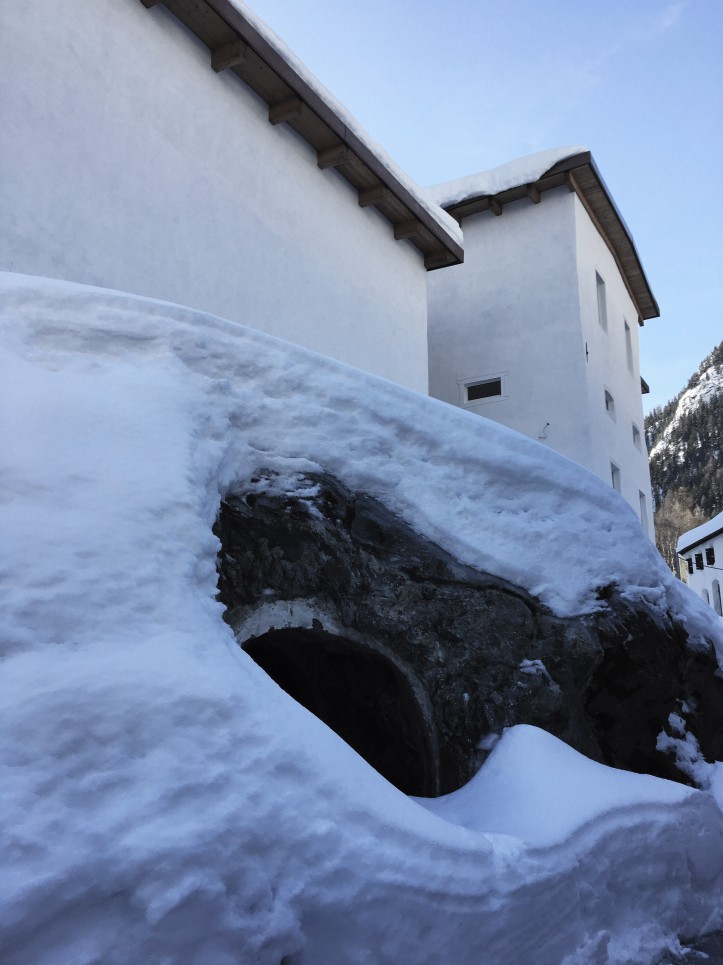
While we were exploring, workers were busy throughout the museum, putting finishing touches to the space. Kulczyk was proud to inform me that most of them were local craftsmen or their neighbours from adjacent Italian towns; plasterers able to lay traditional Engadine plaster, stonemasons, carpenters, all descendants of craftsmen from the area. This is one of the advantages of the conservatism of the local highlanders – traditional craft does not die in the Alps. As I was told, when local people need a table, they still go to a local carpenter rather than a furniture shop. It’s all about the skills that have developed over centuries. For this reason, when in Renaissance Poland one wanted to build something really decent, they would bring in craftsmen from the nearby Lake Como region.
The narrative of Muzeum Susch as a kind of work of art, history, technology and craftsmanship is so eloquent and engaging that you can almost forget that it was created as a space for showcasing art. Waiting to be unpacked, chests containing works of art brought for the museum’s opening show, A Woman Looking at Men Looking at Women, remind me of this fact. This feminist exhibition, curated by Kasia Redzisz from Tate Liverpool, promises to be interesting – artists include names such as Magdalena Abakanowicz, Mária Bartuszová, Louise Bourgeois, Geta Brătescu, Ellen Cantor, Marlene Dumas, Natalia LL, Sarah Lucas, Carolee Schneemann and Alina Szapocznikow. The focus on women’s art and the renegotiation of its place both in history and on the current artistic scene feature strongly in the museum’s proposed programme. Kulczyk, as one of the few women on the richest Poles list, could certainly speak to issues faced by women entering traditional male territories, whether business or art-related. Another theme in the programme, also reflected in the exhibition curated by Redzisz, is mediating the position of Polish (and more generally, Central European) art by placing it within a broader international context.
We hardly talk about the upcoming exhibition (it would be difficult to discuss art works that are yet to be unpacked). However, I can see how they might cope in the space by confronting the site-specific installations, created in order to interact with the architecture of the object for an indefinite period. Susch, with its medieval walls and alpine landscapes, suggests themes dominated by silence, and a prosperous, healthy life led away from urban hustle and bustle, filled with contemplation, reflection, healthy regional fare, and a mountain air unpolluted by neither smog nor information overload.
However, the installations from the permanent collection are far from the insouciant or apolitical Epicurean contemplation that it would be easy to fall into in this picturesque corner of the developed world. In one of the rooms, visitors can view a new part of Piotr Uklański’s sinister The Nazis that premiered last year at documenta 12 in Kassel. In another, there is Joanna Rajkowska’s model of the atomic bomb thrown at Hiroshima, made from painkillers. Herrenzimmer, an incredible installation by the recently deceased Swiss artist Heidi Bucher, is on display in yet another room. This ‘men’s room’ is a kind of sculptural ‘skin’ taken from an authentic room; the living room in the patriarchal, family home of the sculptor – a room that women were forbidden to enter.
Monika Sosnowska’s Stairs sculpture is the jewel in the collection’s crown. The steel construction weighs almost a tonne, is 14-metres high and has the form of a staircase. Similar stairs could be found in some ‘socialist modernist’ buildings, but here they are presented in a peculiar state of deconstruction. The mangled stairs hang like crumpled ribbons – modernity and rationality deformed under the influence of the pressure of contemporaneousness. Sosnowska does not make bad sculptures, but this one really is magnificent. Kulczyk exhibits the piece in the Bieraria Tower, once used to store ice to cool the brewery. The question of how Sosnowska’s giant sculpture got into this space is a separate matter. The tower has been raised, although the architects working with Kulczyk managed to rebuild it without disturbing its proportions. The tower looks as if it were the work of old foremen in its entirety – yet another success on the front of ‘listening’ to the voice of the pre-existing architecture.
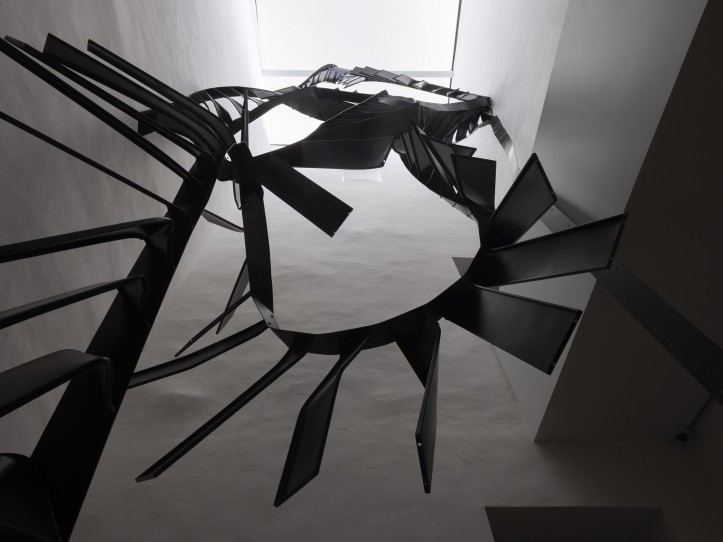
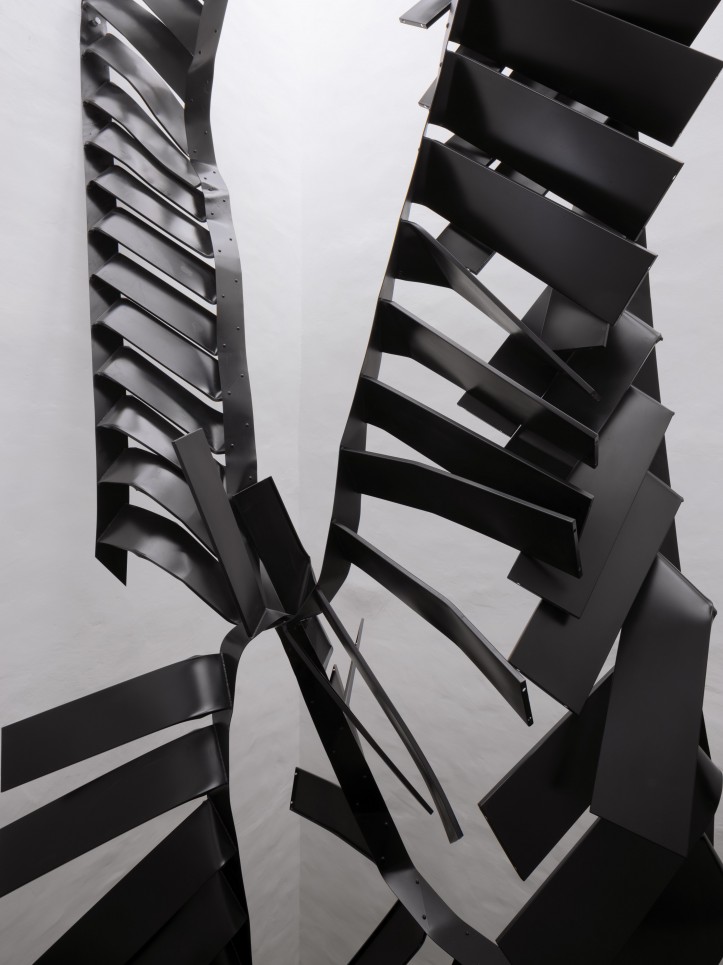
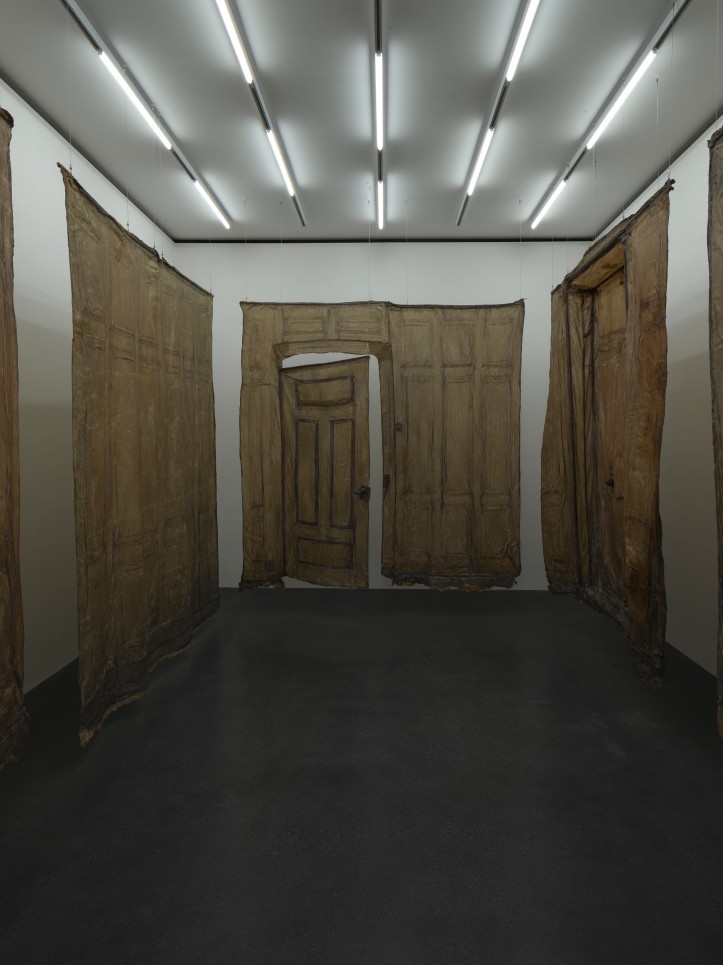
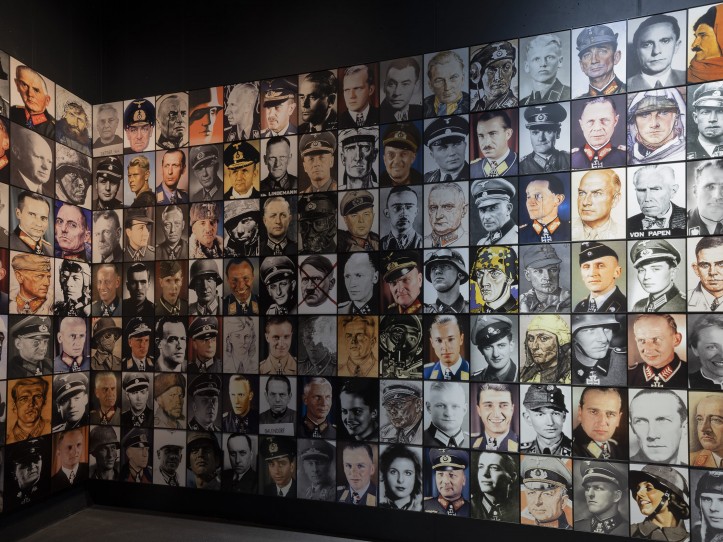
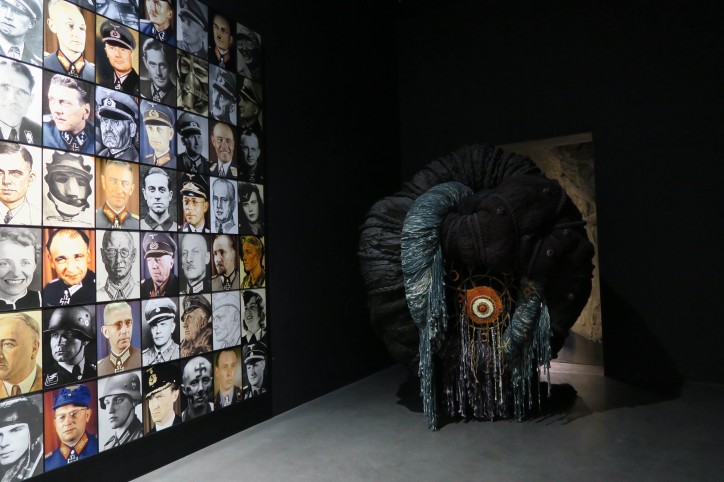
Produced in Poland, Sosnowska’s piece reached Susch via the winding Alpine roads – it must have been a ride reminiscent of the classic film, The Wages of Fear. It was placed inside the tower from above, through the ceiling, which is hard to imagine. It is equally hard to imagine construction work with heavy equipment taking place in tiny, sleepy Susch, where at first glance there is no room for setting up a single crane. Before I can ask, Kulczyk emphasizes that, from the very beginning, she tried to involve the villagers in the process, so that they would see the construction not only as an inconvenience – a blocked road, explosions – but also as a future advantage.
The fact that the local community sees her as a welcome guest – despite being a noisy and troublesome neighbour during the years of construction work – is another one to add to the list of Kulczyk’s successes. Every step of the way, she has demonstrated respect for local traditions, preferred to hire local contractors, consulted her actions, and promised future benefits to the community. After all, the museum is set to become a site of cultural pilgrimage for art enthusiasts. Even the institution’s programmes (such as the cycle of debates and conferences, ‘Disputaziuns Susch’, or the residency programme, ‘Temporars Susch’) are named not in English or even Swiss German, but in Romansh, the Rhaeto-Romance language spoken in the area; a source of pride for local residents still using it.
* * *
The dream has come true – the art collector created her own museum, one truly unlike any other. You could say that it’s easy to fulfil dreams when you have a bank account to match Kulczyk’s. And yet, a visit to Susch makes you realize that it’s not as simple as that. One must also have a vision that is interesting; after all, there is no shortage of people in the world who could achieve anything with their wealth, but dream only of equipping their residences with pure gold doorknobs. Of course, Susch is, in a way, exclusive, but in an entirely unique way. Should the museum turn out to be successful, not as an embodiment of the owner’s vision, but in the sense of the international art world’s recognition, then that success will not be measured in the number of visitors, who for the most part are unlikely to reach these high mountains.
At any rate, the architecture of Muzeum Susch, with its narrow passages, unexpected changes of perspective and attention-grabbing details, is better suited to a lone, focused viewer than the hordes of distracted visitors that nowadays flood popular art institutions in the style of Tate Modern. Kulczyk tells me that her institution is governed by the philosophy of slow art. The rules are similar to the slow food movement: perform tasks with more care and deliberation, do things better, more consciously and wisely. As with any visionary undertaking, there is clearly some madness and risk-taking here. However, there is a method to this madness. At a time when art is turning into an industry, and quality is turning into quantity, a trip to a medieval monastery in a tiny village up in the high, cold mountains is not so much an expedition to the ends of the world, but a well-thought-out escape to the future.
Translated by Joanna Figiel


